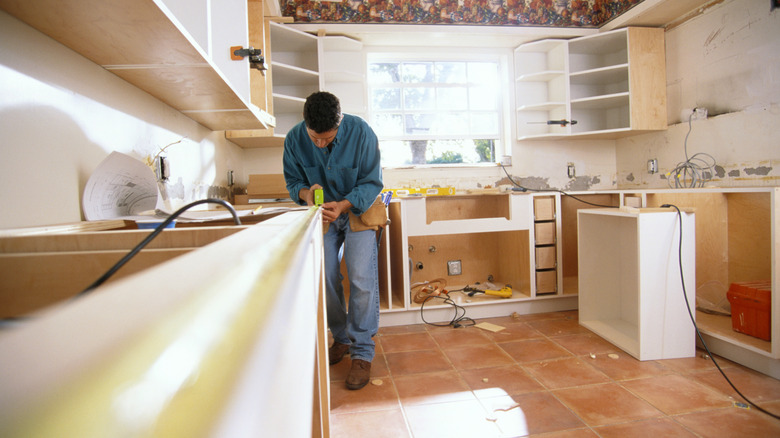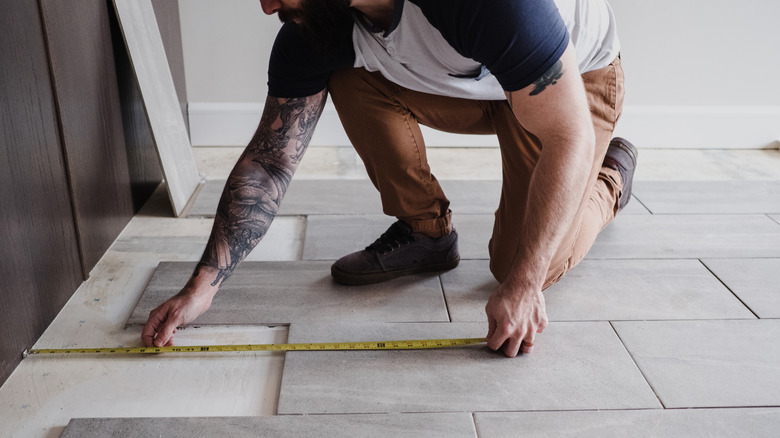What Should You Install First: Tile Floors Or Cabinets?
Which comes first, tile floors or cabinets? It's the catch-22 of kitchen remodeling. There are arguments for both sides. However, the pros outweigh the cons for installing kitchen floor tiles first, and that is what most professionals recommend.
Josh Byrd, owner of Footprints Floors of Nashville, spoke exclusively to Hunker about the subject. As he puts it, "In general, it's best to have the tile floor installed first to achieve the proper height for your countertops in relation to your appliances." The standard height of kitchen cabinets is 34 to 36 inches, which matches the standard sizes for kitchen appliances. If you install kitchen cabinets directly onto the subfloor, your cabinets may not be flush with your oven or dishwasher. As Byrd adds, "This also makes future layout changes with cabinets easier, as you will not have to worry about gaps in the floor."
Installing floor tiles first enables you to freely move, remove, or replace your cabinets without worrying about a naked floor underneath. Doing so will also save you a lot of money in the long run, by preventing water damage: An untreated leak from your refrigerator or dishwasher can seep under your cabinets directly onto your subfloor, causing mold growth and even foundation issues. The tiles also make it easier if you need to repair or replace the leaky appliance — because if your appliance was installed on top of the tiles instead of slightly below, you can pull it out more easily, without causing damage.
While floor tiles should usually come first, there are times when doing cabinets first makes sense
Even though the floor tiles should usually come first, there are some instances where it would be better to save your floor tile installation for last. If you have extremely delicate or irreplaceable tiles (for example, you picked up handmade tiles on a trip to Italy and they don't offer shipping), you may want to install tiles last, to lower the chances they'll be damaged by the cabinet installation crew. And if your tiles are relatively expensive, you may not want to pay for extra tiles that will never see the light of day.
If you are on a tight budget, get quotes from your flooring installer for both scenarios. You may think installing tiles under cabinets would cost a lot more due to the added installation area. However, cutting tiles to fit around cabinets takes extra time, and could end up costing more in labor costs. The overall expense depends on the price of the individual tiles and the amount of cabinets in your kitchen.
What about other types of flooring, like hardwood? "This is a question that comes up a lot," Josh Byrd, owner of Footprints Floors of Nashville, exclusively told Hunker. "Hardwood can be installed under fixed items such as cabinets, whereas your floating floors cannot." Floating floors, also known as click-lock flooring, include laminate, bamboo, luxury vinyl planks (LVP), and luxury vinyl tiles (LVT). They are not attached to the subfloor, but "float" on top, and therefore cannot be placed under heavy cabinets and appliances.

